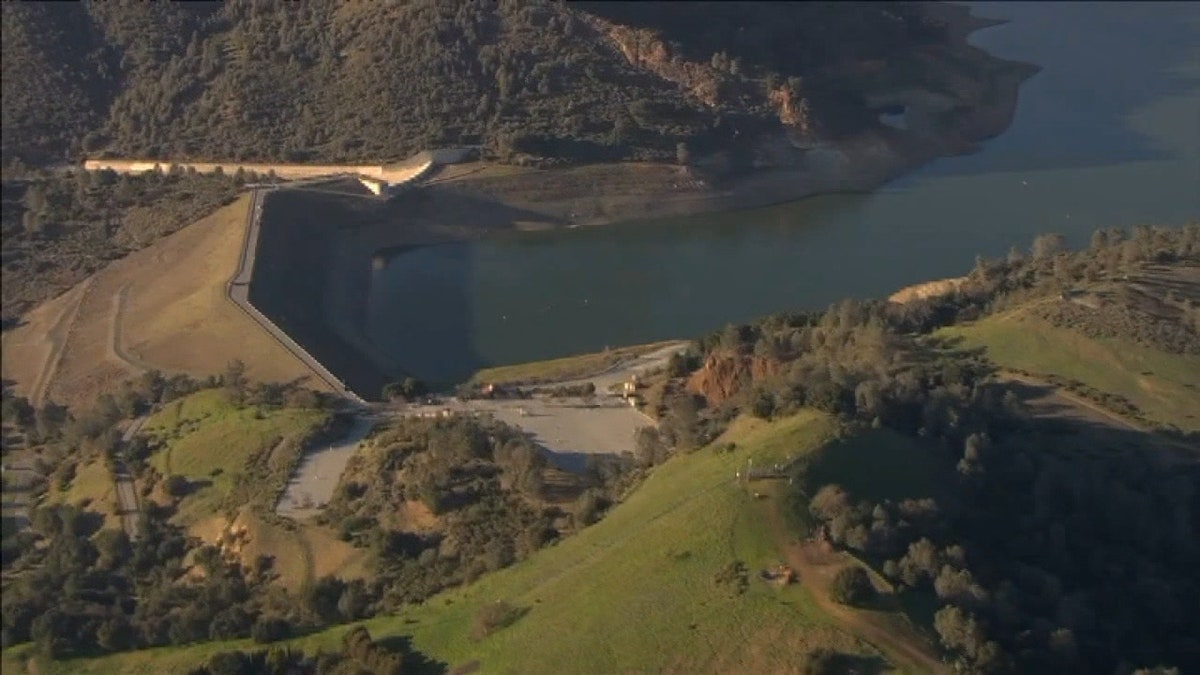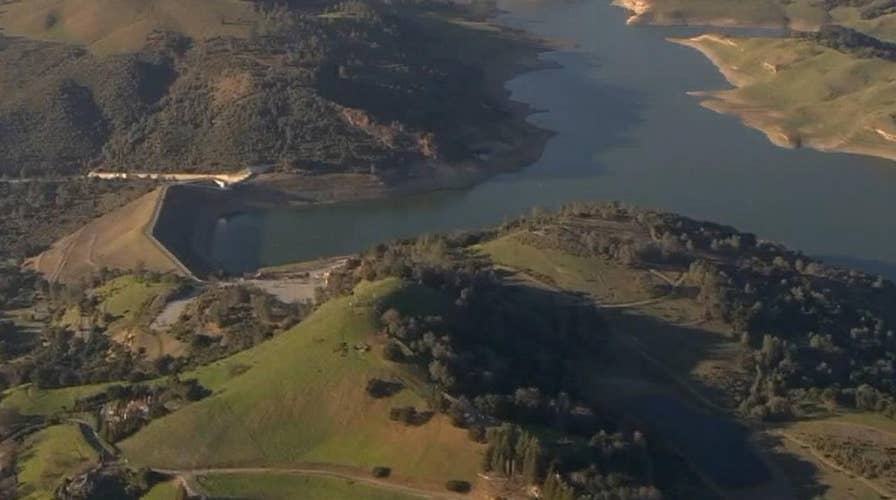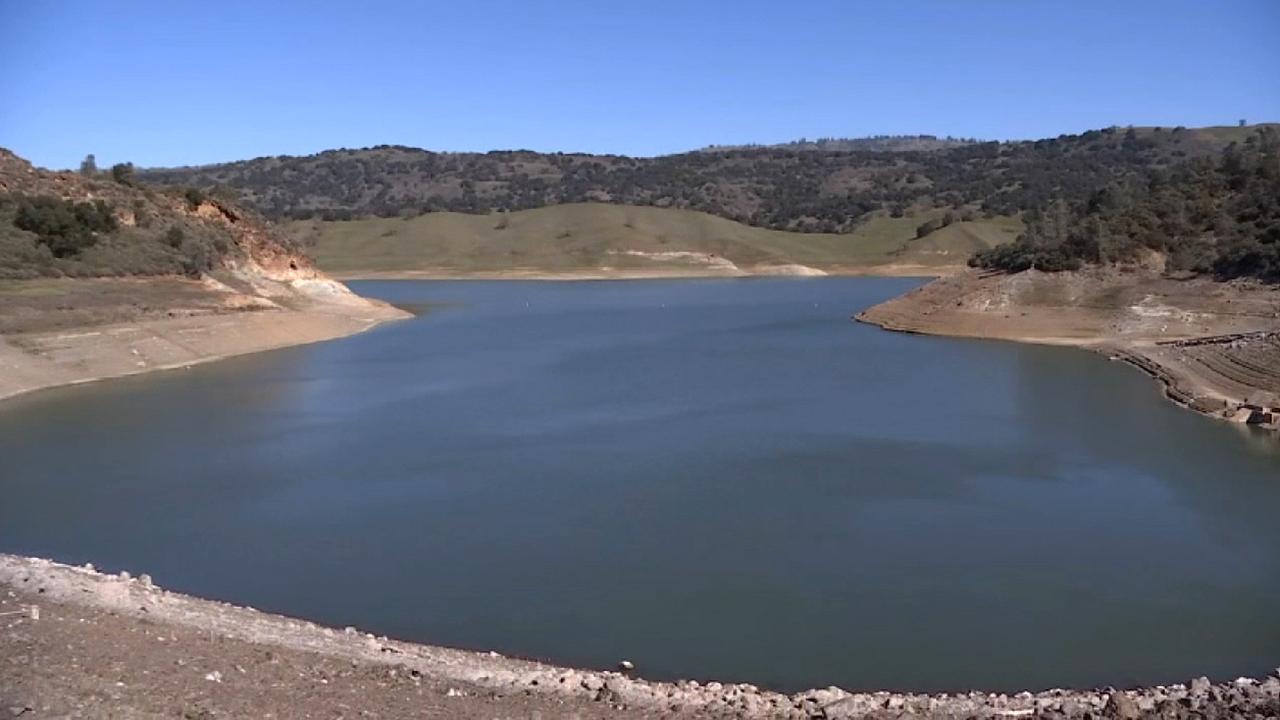Federal government orders California reservoir to be drained in order to replace dam
Residents in Morgan Hill concerned over water restrictions and impact on wildlife if the Coyote Creek dries up.
As California experiences a potentially record-breaking dry February, federal regulators have ordered that a large reservoir south of San Jose be drained due to fears a dam could collapse in an earthquake, sending a torrent of water into Silicon Valley.
The Federal Energy Regulatory Commission ordered last week that the Anderson Reservoir be completely drained by Oct. 1 due to fears the 240-foot high earthen Anderson Dam poses too great a risk of collapse if a large earthquake strikes.
“It is unacceptable to maintain the reservoir at an elevation higher than necessary when it can be reduced, thereby decreasing the risk to public safety and the large population downstream,” David Capka, director of FERC's Division of Dam Safety and Inspections, wrote in a letter Thursday to the Santa Clara Valley Water District, which owns the reservoir.
CALIFORNIA TOWNS DEPLOY SHEEP, GOATS TO REDUCE WILDFIRE RISK AMID DRY FEBRUARY
Anderson Reservoir was built in 1950 between San Jose and the community of Morgan Hill and can hold 90,000 acre-feet of water. The reservoir is the largest in Santa Clara County and holds more than half the water district's capacity in all of its facilities.

Anderson Dam could fail in a 7.2 magnitude quake or stronger, according to an assessment. (KTVU)
Since 2009, the dam’s water level has been kept at a maximum of 74 percent of capacity because of an assessment that it could fail in a 7.2 magnitude quake or stronger. The reservoir is built along the Calaveras Fault. On Monday, amid the threat of another drought in California, Anderson Reservoir was just 29 percent full.

The Anderson Reservoir is a crucial water supply for some two million customers in Northern California. (KTVU)
A seismic retrofit project has been underway because of its state classification in 2017 as being an “extremely high" downstream hazard.
"Studies have shown a large earthquake could damage Anderson Dam, causing an uncontrolled release of water that could inundate cities and rural areas from San Francisco Bay south to Monterey Bay, including much of Silicon Valley," according to the water district.
In 2019, Valley Water produced a video depicting a worst-case scenario if a filled-to-capacity Anderson Dam failed in the event of a major earthquake, which showed major flooding in Coyote Creek that stretched all the way to San Jose. Coyote Creek flows from the dam through downtown San Jose to San Francisco Bay.
The threat of flooding is fresh on the minds of many in the region. More than 14,000 residents had to be evacuated in 2017 as water from swollen Coyote Creek flooded homes and temporarily shut down a portion of a freeway, according to The Associated Press.
On Monday, the water district said it agreed with the federal commission's assessment the reservoir should be drained ahead of the "complicated and time consuming" retrofit project.
5 OF THE MOST DEVASTATING FLOODS IN US HISTORY
“Valley Water has been working with several state and federal agencies through the years to secure the proper permits as the scope of the project has increased due to additional safety and design requirements," Valley Water CEO Norma Camacho said.
“A priority will be to design and build a large outlet pipe, which will provide greater control over the water levels and increase public safety," she added in the statement.
Camacho said draining the largest reservoir in the district will likely kill wildlife downstream in Coyote Creek, including endangered steelhead trout, amphibians and reptiles.
In addition to environmental impacts, a dry winter has the Golden State potentially heading into a new drought.
Stored water is an important part of the south San Francisco Bay Area's supply — with enough water for the annual needs of at least 130,000 people as well as what the district considers an emergency supply.
"While residents have done an excellent job of conserving water since 2013, another drought during this time frame could require everyone to significantly decrease their water use,” Camacho said.
CLICK HERE FOR MORE WEATHER COVERAGE FROM FOX NEWS
The agency is exploring other sources of water from outside Santa Clara County, such as from major reserves in Kern County, Valley Water District Executive Nina Hawk told KTVU.

The Santa Clara County Water District is moving forward with plans to drain the Anderson Reservoir due to a high risk to the public in the event of a significant earthquake. The Anderson Reservoir is the largest in Santa Clara County and along sits the Calaveras Fault.
"That's more than we would use in one year," Hawk said. "That water is available for us to bring into the county for use for our residents coming into this year,"
Since customers have greatly reduced water use as a matter of habit after the most recent drought, officials believe they have more than enough water to meet normal usage while retrofitting of the massive dam is ongoing.

Water lines are visible along the banks of the Anderson Reservoir on February 25, 2020 in Morgan Hill, California. (Photo by Justin Sullivan/Getty Images)
"It's anticipated that this construction could take anywhere from two to potentially five years but it is determined upon the permitting process, the environmental regulations and make sure that we do so in a safe manner and we do so in compliance with the laws and the regulations," Hawk told KTVU.
As part of the reconstruction process, the Anderson Dam will be partially deconstructed and its infrastructure replaced with stronger materials before it is recovered with earth to complete the process. This process is said to be a faster and more economic replacement than if the earth, steel, and concrete were used, according to KTVU.
The Associated Press contributed to this report.



